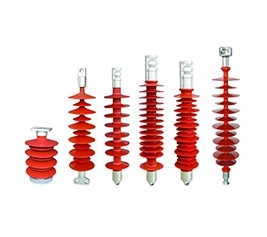en
+
The basic principle of relay protection is to quickly identify and isolate the faulty part by detecting abnormal changes in electrical quantities (such as current, voltage, frequency, etc.) in the power system to ensure the safe and stable operation of the power system and avoid the expansion of faults. When a short circuit, overload or other abnormal situation occurs in the power system, the relay protection device can send a trip signal in time to cut off the faulty line or equipment to prevent the accident from spreading.
The basic principles of relay protection can be summarized as follows:
1. Fault detection principle
The relay protection device collects electrical quantities such as current, voltage, frequency, etc. of the power system and uses the set protection setting value to determine whether the system is in a fault state. Common detection methods include:
- Current monitoring: When the current exceeds the set value (such as overcurrent, short-circuit current), the relay protection device considers that a fault has occurred.
- Voltage monitoring: When the voltage exceeds or falls below the set range (such as overvoltage, undervoltage), the device considers that the power system is abnormal.
- Frequency monitoring: By monitoring the system frequency changes, it is determined whether the system is overloaded or under-generated.
2. Action criteria
Relay protection decides whether to start the protection function according to the set action criteria. Common action criteria include:
- Set value comparison: compare the monitored electrical quantity with the preset set value, and trigger the relay action when the monitored value exceeds the set value range.
- Time delay: a time delay needs to be set when some relays act to avoid instantaneous short-term faults (such as surge current) causing unnecessary tripping.
- Multi-variable comprehensive judgment: some complex protections (such as differential protection and distance protection) not only need to compare electrical quantities, but also need to comprehensively analyze multiple variables to determine whether a fault has occurred.
3. Selectivity principle
The action of relay protection must be selective, that is, when a system fault occurs, try to only cut off the fault area and keep the other parts of the system running normally. This is the core principle of relay protection system design. To this end, relay protection devices are usually implemented through regional protection:
- Layered protection: The protection devices of different equipment and lines are distributed at different levels. When a system fault occurs, the equipment or line closest to the fault point is preferentially cut off to reduce the impact on the entire power grid.
- Cascade protection: Protective devices are configured step by step from the load end to the power generation end to ensure orderly tripping and isolation when faults occur at different levels.
4. Sensitivity principle
Relay protection must be able to detect faults sensitively and quickly and respond to them when they occur. Sensitivity requires that the relay protection device can identify small fault signals and issue a trip command in the shortest time to prevent the fault from expanding.
Sensitivity is usually achieved by adjusting the setting value of the relay:
- If the setting value of the relay is too high, small faults may not be detected in time;
- If the setting value is too low, it may cause false operation (that is, the trip signal will be sent by mistake under normal circumstances).
5. Speed principle
Relay protection must have speed, that is, it must respond quickly at the moment of the fault, issue a trip signal, and cut off the faulty part. Speed requires that the response time of the relay protection device is short enough so that when the system suffers from short circuit or severe overload, the fault can be isolated in time to prevent equipment damage or accident expansion.
Speed is usually related to the protection type and design of the system. For example, differential protection and distance protection can quickly detect faults and respond, while some protections may have a certain time delay to avoid misoperation.
6. Reliability principle
Relay protection must have high reliability, that is, it can reliably operate when a fault occurs and will not misoperate when the system is operating normally. Reliability is one of the most important requirements for relay protection design, ensuring that the system can effectively play a protective role at critical moments.
In order to improve reliability, modern relay protection systems usually adopt a variety of redundant designs and self-checking functions:
- Double or multiple protection: Double or multiple relay protection is usually used for important equipment and lines to ensure that when one protection device fails, the other protection system can continue to work.
- Self-diagnosis function: Relay protection devices usually have self-diagnosis functions, which can timely alarm or automatically switch to the backup system when the equipment fails.
7. Automatic recovery principle
After the relay protection is activated, the system may automatically enter the recovery state. For example, when the fault is eliminated, the automatic reclosing device can reclose the disconnected switch and restore the normal power supply of the power system. This automatic recovery function can avoid long power outages when temporary faults (such as short-term faults caused by lightning strikes) occur.
The basic principles of relay protection include fault detection, action criteria, selectivity, sensitivity, speed, reliability, etc. Through these principles, relay protection devices can quickly and accurately identify faults and isolate faulty parts when faults occur in the power system, ensuring the safety and stability of the power system.




